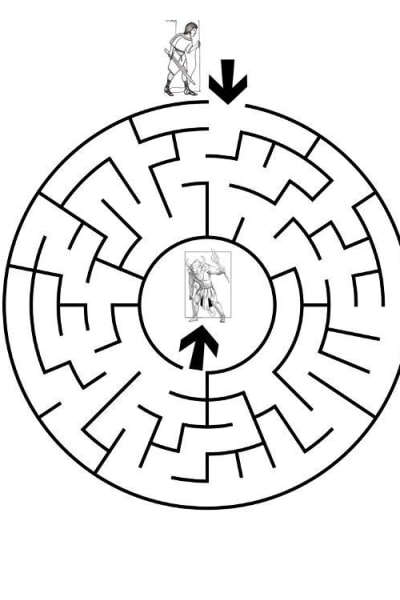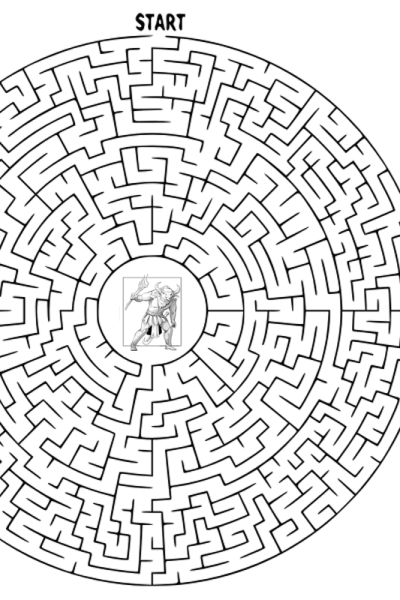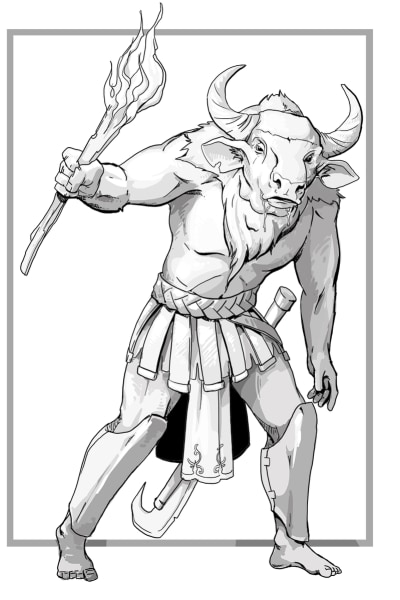Hello!
Welcome to our second edition of Classical Wisdom Kids.
If you are just joining our new exciting endeavor, I highly recommend you check out Our Approach to education and learning to get an understanding of what we’re all about.
As we mentioned, this is a cooperative effort: Our mission is to bring “ancient wisdom to future minds,” so if you have ideas on how we can make this better, with regards to topics, the story, discussion points, activities, printables, please let us know...
While I have spent many years writing about the Classics, building online courses and educational programs, and have even worked as a school teacher, this is my first time combining all these interests and skills in one project.
So your feedback is ESSENTIAL.
Now, onto today’s lesson... We’ll go into one of the most famous stories of all time.
Big claim, I know, but this tale has captured the imagination for thousands of years and has influenced countless painters, authors, philosophers, and is referenced in a huge number of video games and movies.
Why? Because frankly, it’s a cool story. But it’s also a lot more…
This myth dates back to the Age of Heroes, a period of ancient Greek mythology when all of the major events from Greek heroic saga are set... and while for centuries it was thought of as just a story, today you can walk on the very grounds where it took place:
Fortunately today you don’t have to worry about any raging monsters after you… or do you?
Read on to enjoy the epic tale of Theseus, Ariadne and the Minotaur, below.
Enjoy!
All the best,
Anya Leonard
Founder and Director
Classical Wisdom and Classical Wisdom Kids
P.S. Check out our format below - there is a story, followed by review and discussion points, as well as activities. There are also printables, which include a word bank, so young learners can read it themselves and build a vocabulary along the way. Finally, the “Go Further” section is for parents, educators, teenagers or anyone who wants to go a bit further into the topic.
Theseus, Ariadne, and the Minotaur
Theseus is a popular hero in ancient Greece mythology. Theseus grew up in a small town outside of Athens where his mother was queen. His father, the king, had left for Athens before Theseus was born.
When Theseus grew up, he traveled to Athens to meet his father. Their reunion, however, was short. The Athenians were in trouble. Every year, Athens was forced to send 14 people to Minos, the King on the island of Crete, to be eaten by his monster, the Minotaur.
The Minotaur was a dangerous monster with the head of a bull and the body of a man. He was named after the King of Minos, while “Taurus” means bull in Greek. The Minotaur was locked in a labyrinth, or maze, constructed by Daedalus, a brilliant inventor. (You can learn about Daedalus and his son Icarus Here)
The labyrinth was said to be so difficult that anybody caught in it would never find an escape. The people would get lost, walking deeper and deeper into the maze until they were eventually caught and eaten by the Minotaur. Theseus, hearing the tale, swore to beat this monster and show himself a hero.
When Theseus arrived at Crete he was brought before King Minos and his daughter Ariadne. The young princess fell in love with Theseus and decided to help him. Ariadne freed Theseus from the prison and gave him a sword and a ball of thread, so that he might kill the minotaur and also escape the labyrinth.
Ariadne led Theseus to the entrance of the labyrinth, where he tied one end of the thread to the door. Daedalus, the inventor of the labyrinth, had told Ariadne how to get through the maze. Theseus followed these instructions, heading straight down and never left or right.
In the middle of the night, Theseus found the sleeping Minotaur. The beast woke up, a great battle took place and Theseus won. Following the thread, Theseus found his way back and escaped with the princess Ariadne.
Theseus had wanted to take Ariadne back to Athens with him, but the goddess Hera told Theseus in a dream to leave the young woman behind, and so he left Ariadne while she slept. When the god Dionysus saw her crying, he decided to marry her. Dionysus then threw Ariadne's crown into the sky to create a constellation, the Corona Borealis, or the “Northern Crown”... so in the end, Adriane became a ‘queen’ in the heavens.
Theseus became the king of Athens, returning home as a hero. The story of his victory over the Minotaur remains popular to this day.
Review:
What is a Minotaur?
Why was the Minotaur in a Labyrinth?
How did Theseus find the Minotaur?
How did Theseus know how to escape?
Discussion Points:
All sorts of cultures have heroes in their myths or fairy tales, where one person saves another. In this story, is there only one hero? Who comes to the rescue?
What other ways could you find your way out of a maze?
One of the most famous Spanish speaking authors wrote a short story from the Minotaur’s perspective. What do you think the life of the Minotaur was like?
What makes something a ‘monster’? What makes someone a hero?
Activities:
Hands on! Can you make a maze in your house? Move furniture, use pillows, blankets, chairs, whatever you can easily arrange and see if you can make a Hero-Worthy Labyrinth in your own house! Added fun: Either have someone ‘hide’ as the minotaur, or take an object to be the minotaur and hide it somewhere in the maze. If a simple maze is too easy, make it an obstacle course... or blindfold “Theseus”. After all, he did find the Minotaur in the middle of the night.
Follow the String! One person takes a string, ribbon, floss, or thread and creates a path. It can be either through a created maze, through the house, or in a small (more manageable) room. See if the other person can follow the string. You can also take it to a forest or a park. Play with other methods for creating a path to follow with rocks, chalk, cheerios...
To Print: Calm down with the attached mazes. There is a simple and hard version. You can also color in the characters in the printable story. Both Theseus and Ariadne have traditional Minoan clothing. What colors do you think their clothes would have been?
Write it out: See if you can follow Argentine author Jorge Luis Borges’ example and write a short story from the perspective of any of the characters. It can be the Minotaur, Theseus or Ariadne... or maybe one of the gods!
Download the Printable Version (with Word Bank!) Here:
The ‘Go Further’ Section:
Did you know? The Minoan civilization, a Bronze Age Aegean civilization on the island of Crete and many other Aegean Islands, dating from c. 3500 BC to around 1100 BC, is named AFTER King Minos. British archaeologist Sir Arthur Evans coined the term when he identified the site at Knossos with the labyrinth of the Minotaur. The Minoan civilization has been described as the earliest of its kind in Europe, referred to as "the first link in the European chain".
Enjoy Jorge Luis Borges’ (Argentina’s most famous author and brilliant blind Classicist) beautiful “The House of Asterion”. You can download the PDF here:
The Minotaur (infamia di Creti, Italian for "infamy of Crete"), appears briefly in Dante's Inferno, in Canto 12 (l. 12–13, 16–21), where Dante and his guide Virgil find themselves picking their way among boulders dislodged on the slope and preparing to enter into the seventh circle of hell.












I really love this! I homeschool a 3rd & 4th grader so I think I’ll read the story while they try to do the hard maze then have the discussion. I’ll try to circle back with an update on how it was received:)
Can you recommend me some interesting game? I want to do something in my free time from work.